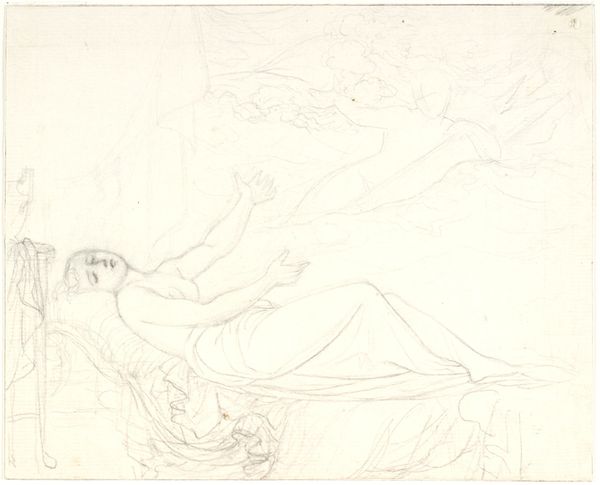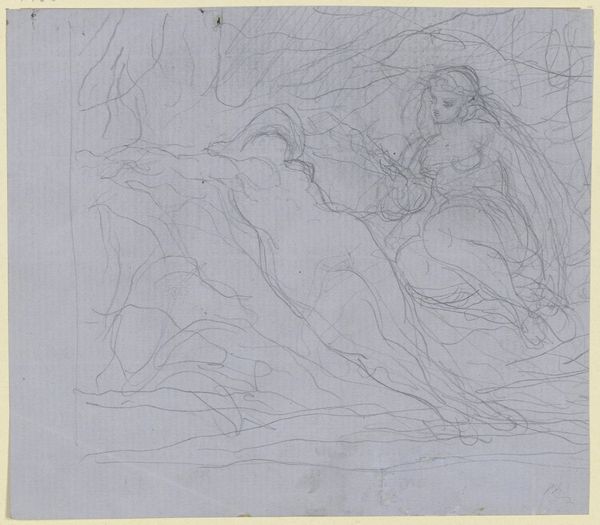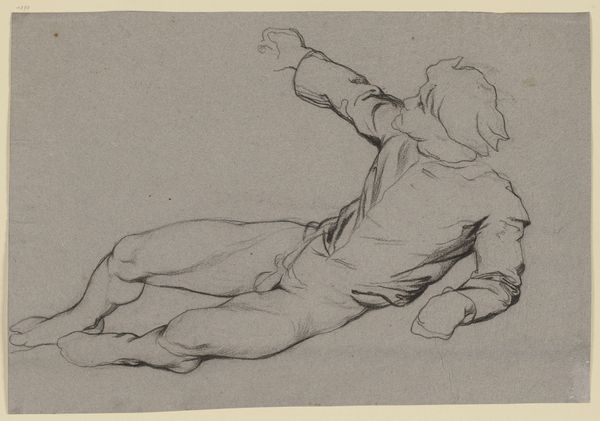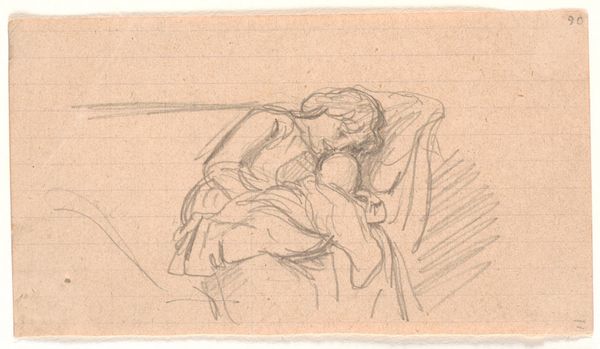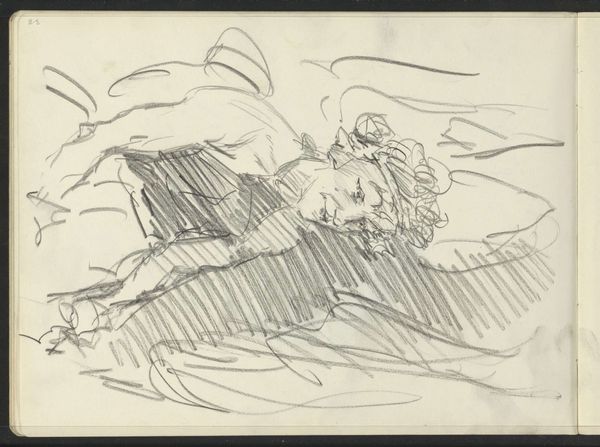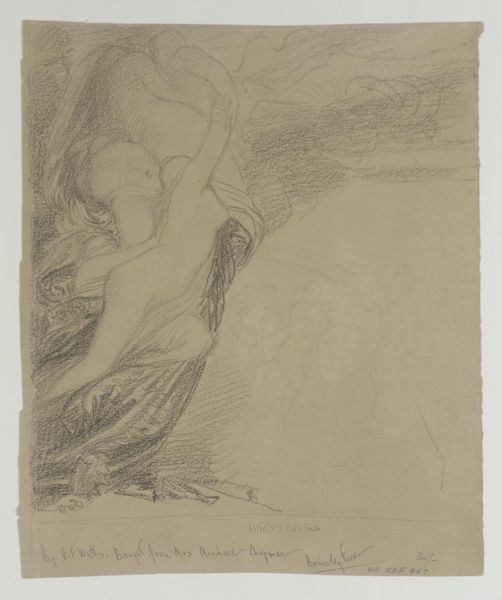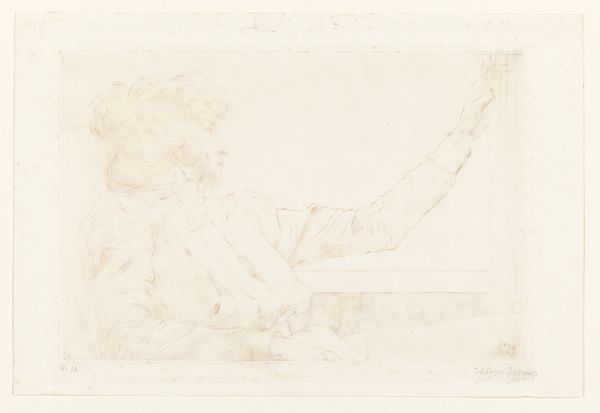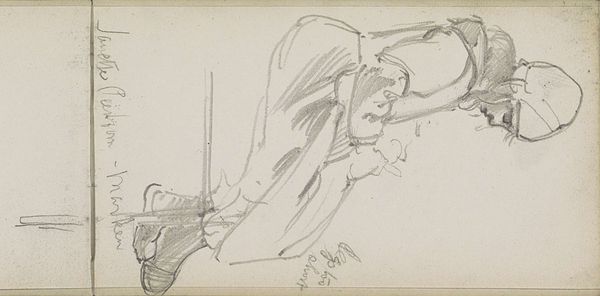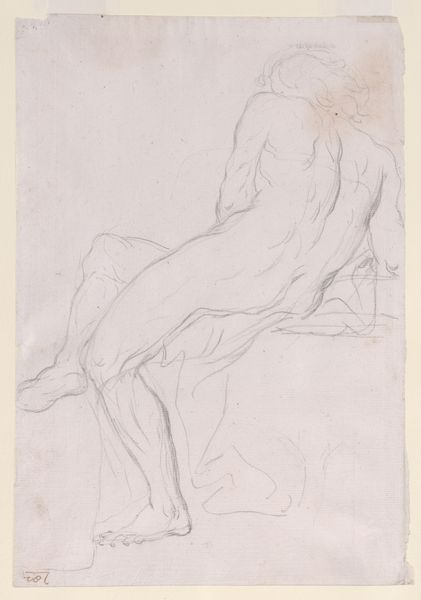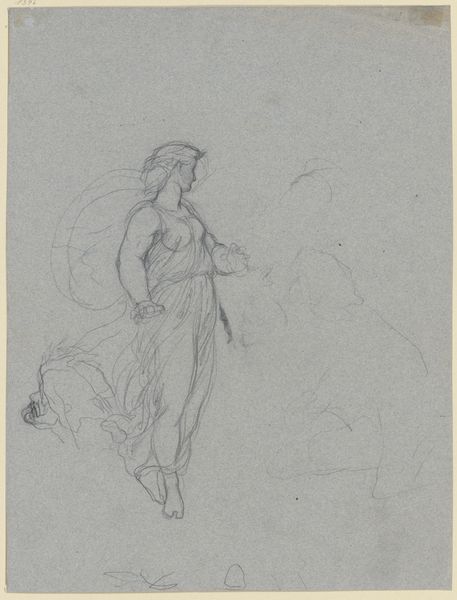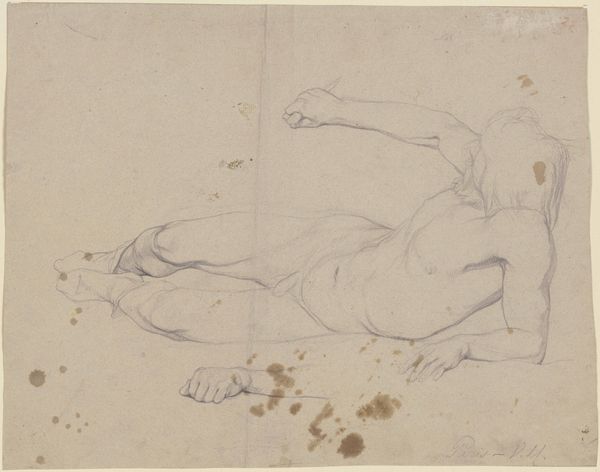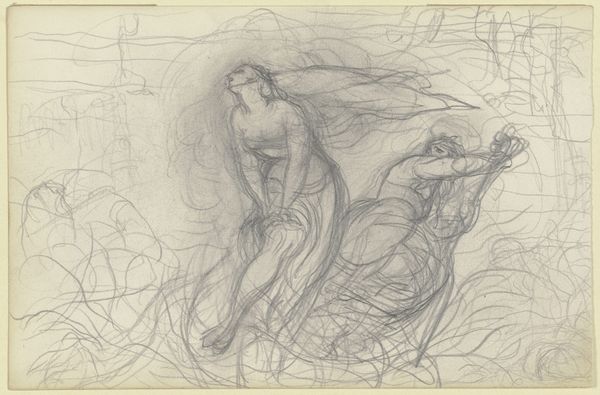
Udkast til dørstykke. En vinget olding på knæ, der ryster sne ud af et sold, fremstillende Nordenvinden 1743 - 1809
0:00
0:00
Dimensions: 125 mm (height) x 280 mm (width) (bladmaal)
Editor: So this is "Udkast til dørstykke. En vinget olding på knæ, der ryster sne ud af et sold, fremstillende Nordenvinden," or "Sketch for a Door Panel. A Winged Old Man on His Knees, Shaking Snow out of a Sieve, Representing the North Wind" by Nicolai Abildgaard, made sometime between 1743 and 1809. It's a pencil drawing, and I’m struck by the…roughness of it, almost like we're seeing the raw idea before it takes a more concrete form. What stands out to you? Curator: The real value, for me, lies in its articulation of artistic labor. Think about the context: Abildgaard, a figure embedded within a specific system of patronage and production. He wasn't just sketching an idea; he was engaging in the physical act of creation, responding to material conditions with the limited resources available to him. How does the medium itself - humble pencil on paper - inform our understanding of 18th-century artistic practice and the making of "high art"? Editor: That’s interesting, thinking about it in terms of artistic labor… So, instead of seeing a study for something bigger and more important, you’re suggesting that we see the worth in the act itself and the materials used? Curator: Exactly! Look at the lines themselves—hatching and cross-hatching not to render form realistically, but to grapple with the *idea* of form, the idea of “north wind”. Is it complete? No, but its incompleteness gives access to process. Think about the paper: was it handmade, imported? The graphite in the pencil: mined, processed, traded? This seemingly simple sketch is really enmeshed in networks of production and consumption. Editor: That makes me think about the division of labor at the time. Abildgaard’s status dictated access to materials, time, and opportunities to even make sketches like this, versus those who literally produced those resources. Curator: Precisely! So, in that sense, we begin to challenge that artificial separation of high art from everyday life and consider the social and economic conditions shaping artistic production. It goes beyond the surface depiction and uncovers the infrastructure that allows the drawing to exist. Editor: Wow, I hadn’t considered all those implications behind a simple pencil drawing. Thanks for opening my eyes to a completely new way of seeing it. Curator: It’s about acknowledging that all art, even the most seemingly ethereal, is rooted in very concrete, material realities.
Comments
No comments
Be the first to comment and join the conversation on the ultimate creative platform.
